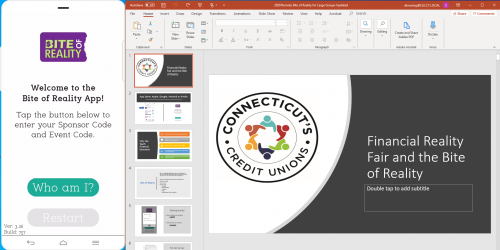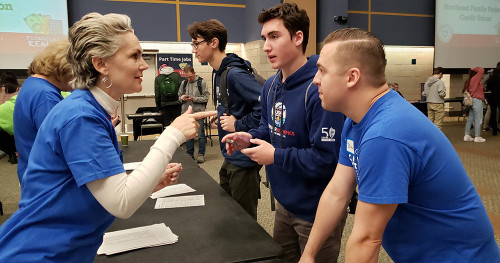Blog
- Back
- |
- 2 minutes reading time
CT League Foundation Conducts Virtual Financial Reality Fairs

With the shutting of schools across the country and distance learning taking place in Connecticut for the rest of the academic year, the Credit Union League of Connecticut offered virtual reality fairs to teach financial education amidst a pandemic.
Credit Unions Building Financial Independence—the League’s non-profit foundation—recently conducted virtual reality fairs by utilizing technology to help provide financial education to high school students.
More than 130 students from Staples High School in Westport, Conn., participated in the virtual reality fair using the Bite of Reality App which was developed by the RMJ Foundation. Over the course of two days, six classes participated in the virtual reality fair simulation, which is completed in roughly one hour.
Using a customized version of the Bite of Reality app, along with Google Meet and an app to mirror the facilitators’ cell phone, students got to learn about making reasonable financial choices, paying down debt, saving for emergencies, saving for retirement and dealing with student loan debt.
“With this public health and financial crisis, now is the best time to talk to high school students about the importance of saving for emergencies and managing money,” said David Hinchey, the League’s director of community impact who runs the League’s foundation. “When the pandemic hit, I didn’t want the students to go without credit union-sponsored financial education, especially when they look forward to attending a reality fair all year.”
Hinchey said the students really grasped the financial concepts well and asked good questions by utilizing the chat function inside Google Meet. He said students from a couple different classes asked about GAP insurance and Mechanical Breakdown Insurance during a stop at the transportation booth, which opened up a conversation about ancillary products.
Hinchey said other students reported their random events by using the chat function to reveal that they had lost money or gained money. The random events or “fickle finger of fate” takes place during the simulation where students have something happen to them, such as breaking their glasses and having to pay money or selling books back and getting money.

Under normal circumstances, reality fairs consist of students gathering in a gymnasium or community center and visiting various stations to purchase items that fit within their budget from a room full of credit union volunteers. However, due to Covid-19, spring reality fairs in Connecticut were canceled out of precaution, which left thousands of students without the benefit of the experience.
Since the beginning of March, CUBFI looked into ways to deliver financial education remotely using apps and technology to provide the lessons that will keep students engaged, while reinforcing financial education concepts delivered by the classroom teacher.
In some cases, the League’s foundation is able to deliver a semester’s-worth of content in an hour by touching on topics such as credit score, debt, student loans, saving money along with needs versus wants.
Here’s how the virtual reality fair worked. Students downloaded the Bite of Reality App on their phone and used their computer to view the facilitator’s presentation in Google Meet. Students then stepped through the simulation by making their booth choices and staying within budget.
The foundation serves as the facilitator in the simulation by mirroring his or her screen and running the PowerPoint with various booth choices, such as housing, transportation, food, clothing, cell phones etc. As a facilitator, I can demonstrate to the students how the app works while I step through the exercise with them.
Since 2008-09, the foundation has run more than 30,000 Connecticut high school students through a reality fair (mostly in-person fairs and now one virtually).